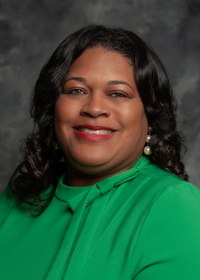Did You Know You Can Make Your Own Baby Food?
Transitioning to baby food marks a significant milestone in an infant’s development, typically occurring around 6 months of age. During this period, infants are introduced to solid foods alongside breast milk or formula, creating an exciting phase of exploration for both babies and parents.
This transition helps nourish babies’ bodies and fosters a lifelong relationship with food and healthy eating habits. Gradually incorporating pureed cereals, vegetables, meats, and fruits helps infants to develop chewing and swallowing skills and supplies essential nutrients for growth.
When parents introduce baby food, they need to monitor their baby’s reactions to different foods and adjust to their changing dietary needs.
Choosing to make homemade baby food can be one effective way for parents to ensure their babies receive vital nutrients. This publication covers when babies are ready to transition to baby food and provides additional information on making homemade baby food.
How do I know that my baby is ready for baby food?
- Your baby can hold up their head.
- Your baby opens their mouth when they see food.
- Your baby can move a spoon to their mouth.
- Your baby’s birth weight has doubled, and they weigh more than 13 pounds.
What are the benefits of homemade baby food?
- It’s cheaper than store-bought baby food.
- It has more nutrients than store-bought baby food.
- You can introduce foods that your family is already eating.
How do I prepare homemade baby food?
- Wash your hands.
- Make sure your workspace and equipment are clean. If you are preparing adult meals at the same time, make sure the food and cooking utensils used to prepare baby food are kept separate to prevent cross-contamination. Be sure to wash your hands any time you handle raw meat.
- If using fresh produce, wash under running water. You can also use frozen vegetables. We recommend using fresh produce that blends easily like green beans, lima beans, peas, sweet potatoes, avocados, carrots, squash, and bananas.
- For easy and quick cooking, chop up the food.
- You can lightly season baby food to develop their taste and introduce flavor into their diet. However, you should not add sugar to the baby food; consider using non-spicy seasonings.
- You can steam or roast/bake the food to make the item soft and retain nutrients.
- Once the food has reached the appropriate temperature (165°F), let it cool.
- Once the food is cool, place it in a blender to blend. If you do not have a blender, you can use a fork or potato masher to blend the food. If the food is too thick, you can mix in a little breast milk, formula, water, or low-sodium broth while blending/mashing.
- You can store homemade baby food in the fridge for 1–2 days. Frozen baby food can be stored in the freezer for up to 2 months.
How do I freeze and store homemade baby food?
- Pour the mixture into an ice cube tray to freeze. We recommend using a large resealable freezer bag to keep other scents/foods in the freezer from potentially mixing with the baby food.
- Make sure to label with the date the food was prepared for freezing. When serving, make sure to use the bag with the oldest date first.
Note: You can freeze food for up to 2 months. Remember, the longer foods are frozen, the more likely nutrients will be lost.
Tips
To Store
- Store on the top shelf. This will keep food from becoming contaminated if something spills in the fridge or freezer.
- Store toward the back to keep at the right temperature. Do not put it in the door of the fridge or freezer.
- Make sure food is sealed correctly.
- Do not reuse store-bought baby food containers to store fresh, homemade baby food.
- Once food is in the fridge, it must be eaten within 2 days, preferably within 24–48 hours.
- It is best to store the baby food in a container that is shallow and thin, as it is easiest to thaw and warm.
To Serve
- Remove the desired portion from the container (you can pop out the cubes based on how many servings are needed; one cube is approximately 1 ounce.)
- Remove frozen food from the freezer 24 hours before serving and place in the refrigerator to thaw. You may also thaw baby food under cold running water.
- You can serve baby food cold, at room temperature, or warmed. You can warm it over the stove by placing the food in a small, heat-resistant dish. Then, place the dish in a saucepan that has about an inch or so of water. Heat the water to simmer until the food is warmed, and taste the food to make sure it is not too hot for your baby. It should be lukewarm before serving.
To Remember
- Introduce one new food at a time. Wait a few days between new foods to be sure they are not allergic.
- Offer your baby a variety of foods to try different tastes and textures, which will also provide a variety of nutrients. Iron is one of the more crucial nutrients for babies as they start to explore new foods. If you are not sure where to start, use single-grain cereal such as oatmeal, then move on to pureeing beans/lentils, meat, ripe bananas, or avocados.
- Babies only need 1–2 teaspoons of food per serving. It is normal for babies to spit out food as they are learning the new texture and taste. At ages 6–8 months, you can offer solid foods two times a day. Each meal would be 2–4 tablespoons. After 9–12 months, provide the solid food three times a day. Meals should be the size of your baby’s fist.
- New food needs to be introduced about a dozen times to infants and children before they decide if they like it or not.
- Solid foods are not meant to replace breast milk or formula. Offer solid food after providing your baby with their normal serving of breast milk or formula.
What is the nutritional value and cost of ingredients?
When selecting a food to prepare, especially if using frozen food, make sure to check the nutrition label to ensure there is little to no sodium content and no added sugar or sodium. Typically, a 10-ounce package of vegetables that can be used to make several servings of baby food is cheaper than purchasing 2.5 ounces of store-bought baby food.
What are some recommended books to read before mealtime?
You can make mealtime more fun by reading to your child before mealtime. Listed below are some recommended books to encourage healthy eating:
- Baby Food by Margaret Miller
- Eating the Alphabet by Lois Ehlert
- Eating the Rainbow (Babies Everywhere) by Star Bright Books
- Growing Vegetable Soup by Lois Ehlert
- The Carrot Seed by Ruth Krauss
- Today Is Monday by Eric Carle
References
American Academy of Pediatrics. (2022). Starting solid foods. Healthychildren.org.
Food Safety. (2023). People at risk: Children under five. Foodsafety.gov.
Gorin, A. (2024). How to introduce your baby’s first food. Parents.
Hedstrom, N. (2021). Making your own baby food. University of Maine Cooperative Extension.
Hunter, J., Hovey, S., Cason, K., & Northcutt, J. K. (2009, May 20). Making your own baby food. Clemson Cooperative Extension.
Mayo Clinic. (2024). Solid foods: How to get your baby started. Infant and toddler health.
Weisenberger, J. (2019). How to make homemade baby food. Kids Eat Right, Academy of Nutrition and Dietetics.
The information given here is for educational purposes only. References to commercial products, trade names, or suppliers are made with the understanding that no endorsement is implied and that no discrimination against other products or suppliers is intended.
Publication 4064 (POD-11-24)
By Louise E. Davis, PhD, former Extension Professor, Elizabeth Thorne, PhD, Project Manager, Jamila Taylor, Interim Executive Director, and Sarah Moody, MBA, Publications Manager, Human Sciences.
The Mississippi State University Extension Service is working to ensure all web content is accessible to all users. If you need assistance accessing any of our content, please email the webteam or call 662-325-2262.




